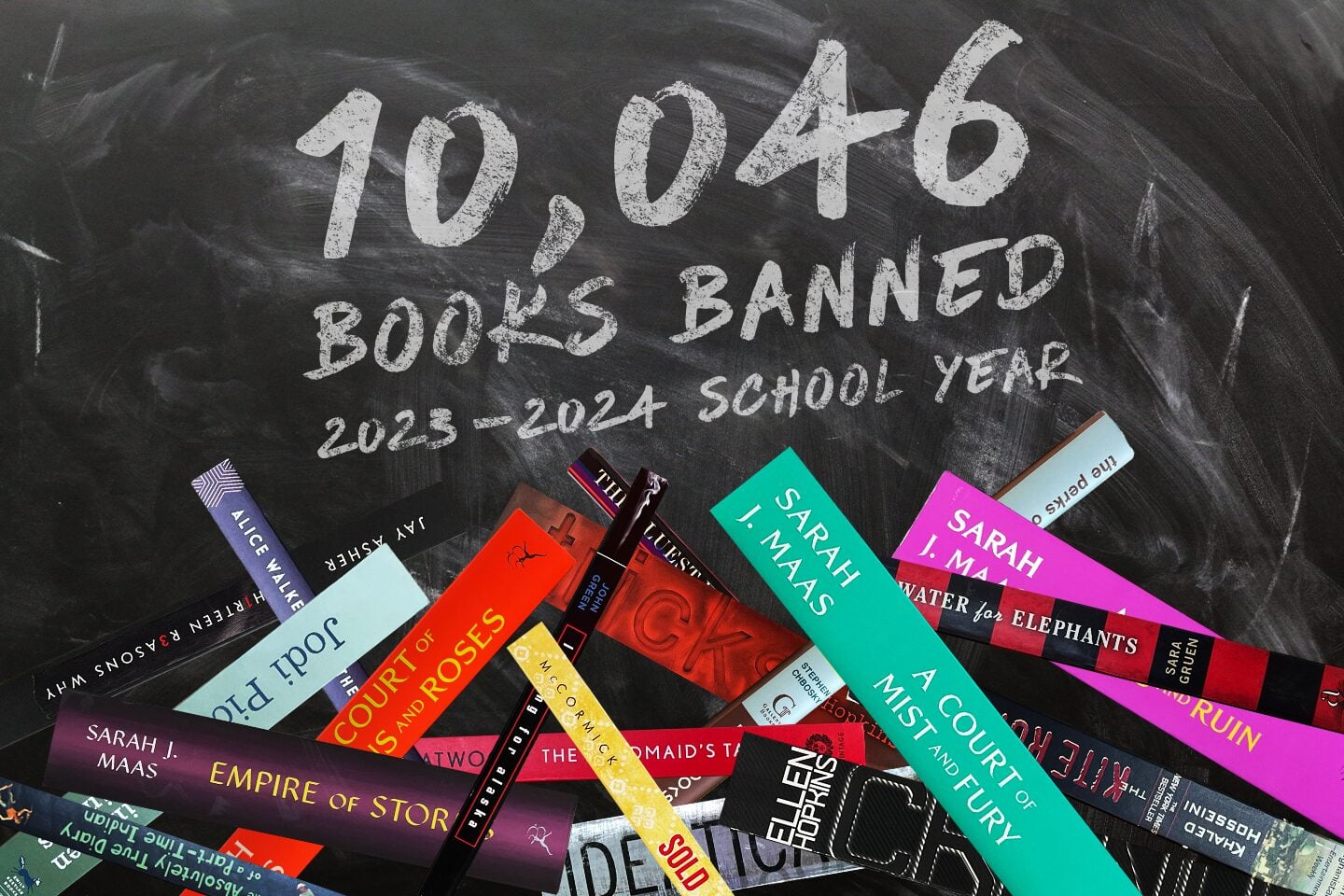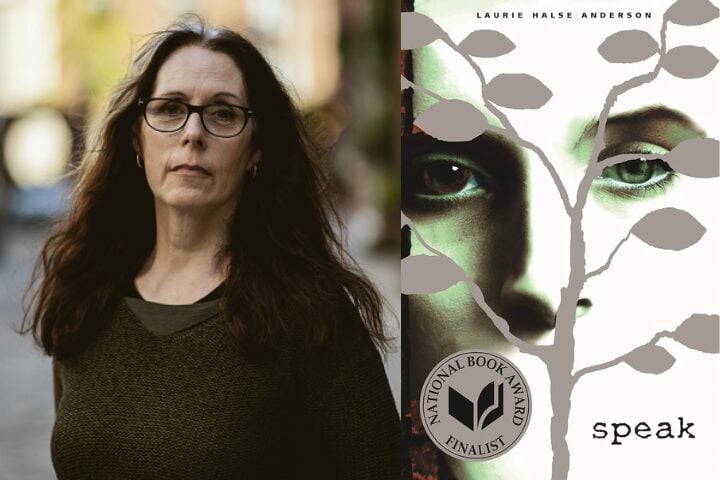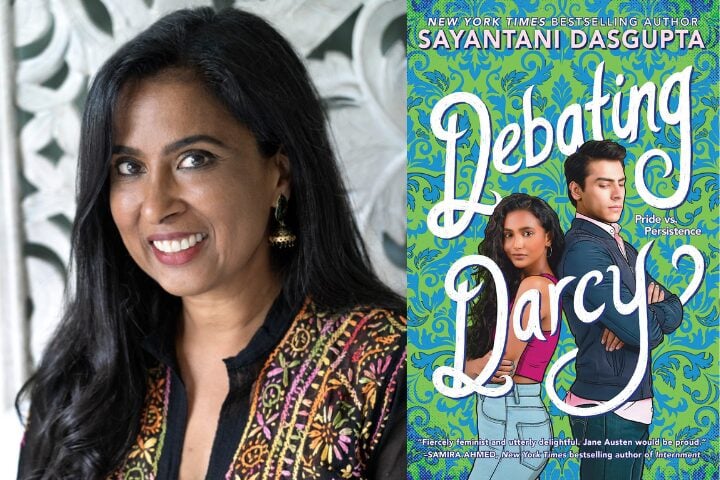Banned in the USA: Beyond the Shelves

For the last three school years, PEN America has recorded instances of book bans in public schools nationwide. In that time, efforts to erase certain stories and identities from school libraries have not only intensified; book bans have become a bellwether of the chilling of public education writ large. As this report on the 2023-24 school year documents, the last school year was no different, as censorial trends have continued to ripple beyond the shelves.
10,046
During the 2023-2024 school year, PEN America recorded 10,046 instances of book bans.
Key Findings:
The 2023-2024 school year recorded the highest instances of book bans and highest number of unique titles banned – over 4,000 unique titles were removed in over 10,000 instances of book bans.
In this school year, a greater percentage of books faced more severe bans in 2023-2024 than in previous school years, completely removed from district library collections.
Florida and Iowa recorded the highest number of book bans during the 2023-2024 school year with over 4,500 book bans in Florida and over 3,600 in Iowa.
PEN America analyzed the content of the most commonly banned books this year — books banned in two or more districts (1,091 books), and found the following:
Disproportionate to publishing rates and like prior school years, books in this prominent subset overwhelmingly include books with people and characters of color (44%) and books with LGBTQ+ people and characters (39%).
Over half (57%) of the banned titles in this subset include sex-related themes or depictions, due to ramped up attacks on “sexual content.”
Nearly 60% of these banned titles are written for young adult audiences, and depict topics young people confront in the real world, including grief and death, experiences with substance abuse, suicide, depression and mental health concerns, and sexual violence.
PEN America Experts:
Program Director, Freedom to Read
Senior Program Manager, Freedom to Read
Senior Advisor, Freedom to Read
Program Coordinator, Freedom to Read
What students can read in schools provides the foundation for their lives, whether we are talking about critical thinking, empathy across difference, personal well-being, or long-term success.
But since 2021 a movement to ban books has put students’ freedom to read in jeopardy, advancing extreme conservative viewpoints about what is appropriate and allowable in schools. Through local campaigns and state laws, this movement has placed tremendous pressures on school districts, administrators, librarians, and educators, and impacted an astonishing array of books and subjects, from new picture books or young adult novels to literary classics — from Captain Underpants to Roots, from The Handmaid’s Tale to the Merriam-Webster dictionary. Year after year, this campaign to scrutinize and ideologically control literature in public schools continues to grow; the 2023-2024 school year is no exception.
Book bans, while alarming on their own, are also a bellwether for rising educational censorship that has plagued not only K-12 public schools since 2021, but a range of institutions, including public libraries, colleges and universities. Across these institutions, we have seen a range of policy changes and new state laws, designed to suppress education about certain viewpoints, identities, and histories; namely, concerning people of color, LGBTQ+ people, and sex. This broad campaign uses falsehoods, fear, and hatred to dehumanize, dismiss, and diminish important voices in the public sphere — and these efforts are reshaping American public education.
This report provides a snapshot of the 2023-2024 school year, the third school year PEN America has recorded instances of book bans. This report is the second in a series of reports examining the 2023-2024 school year and confirms and details findings first reported in September, 2024, namely, that there were more than 10,000 instances of book bans in schools nationwide.
This report also includes analysis of the content of the most commonly banned titles and shows how bans have predominantly targeted books with themes related to race, sexuality, and gender identity. We detail how books are increasingly being censored that depict topics young people confront in the real world, including experiences with substance abuse, suicide, depression and mental health concerns, and sexual violence. Forthcoming reports in this series will continue to explore trends over the last three years of educational censorship in public schools.
Overview of School Book Bans
From July 2023 to June 2024, PEN America’s Index of School Book Bans recorded 10,046 instances of book bans across 29 states and 220 public school districts. When taken all together, since July 2021, we have recorded 15,940 instances of book bans across 43 states and 415 public school districts.
What is a School Book Ban?
PEN America defines a school book ban as any action taken against a book based on its content and as a result of parent or community challenges, administrative decisions, or in response to direct or threatened action by lawmakers or other governmental officials, that leads to a previously accessible book being either completely removed from availability to students, or where access to a book is restricted or diminished, either temporarily or permanently.
It is important to recognize that books available in schools, whether in a school or classroom library or as part of a curriculum, were selected by librarians and educators as part of the educational offerings to students. Book bans occur when those choices are overridden by school boards, administrators, or even politicians on the basis of a particular book’s content.
Our definition for a book ban has been consistent since we first recorded a public Index of School Book Bans and is intentionally comprehensive, as our guiding principle is access for students and protecting the freedom to read for young people. When access is diminished and the freedom to read is restricted, even for a short period of time, that is a ban on a book. The passage of time when you’re in 6th grade or 11th grade is unique; it goes by fast. Restrictions on access, as well as the message banning books sends, have long-term implications for students’ learning, wellbeing, and empathy.
For the 2023-24 school year, we recorded three types of school book bans: “banned,” which includes books that have been completely prohibited; “banned pending investigation,” which includes books that are pending a review to determine what restrictions, if any, to implement on them; and “banned by restriction” which includes grade-level or school-level restrictions or books that require parental permissions.
In prior school years, we recorded “banned from libraries” and “banned from classrooms” as distinct categories to capture when books may be banned in one or the other. As decision-making on book bans is increasingly made at the district-level and to provide a more accurate description of this type of book ban, we collapsed these two categories into “banned by restriction” to report this school year’s data. For a detailed explanation of each type of book ban, visit our School Book Ban FAQ.
During the 2023-2024 school year, of the total books banned, 44% were books banned pending investigation and 13% were books banned by restriction. Alarmingly, 43% of book ban cases, or 4,295 bans, were books that were completely prohibited from access – neither pending a review nor available with newly imposed restrictions. These books were decidedly removed and were made inaccessible from a school and/or district’s collection. This is substantially larger than in the prior two school years. In 2021-2022, 333 bans (13% of all bans that year) fell under this category; in 2022-23, this increased to 1,263 bans (38% of all bans that year).
For more details, please visit PEN America’s Methodology and Frequently Asked Questions on book bans. You can also visit our prior reports on book bans released in April 2022, September 2022, April 2023, September 2023, December 2023, April 2024, and September 2024.
Most Banned Titles
Since 2021, several titles have been banned year after year across public school districts. These titles largely include depictions of sex, or feature LBGTQ+ people and characters, or people and characters of color. The titles are commonly included on lists circulated online by individuals and groups calling for greater restrictions and censorship of books in schools.
During the 2023-2024 school year, 19 titles were banned in 50 or more school districts nationwide. The most commonly banned title was Nineteen Minutes by Jodi Picoult.
- Nineteen Minutes by Jodi Picoult
- Looking for Alaska by John Green
- The Perks of Being a Wallflower by Stephen Chbosky
- Sold by Patricia McCormick
- Thirteen Reasons Why by Jay Asher
- Crank by Ellen Hopkins
- Identical by Ellen Hopkins
- The Kite Runner by Khaled Hosseini
- The Handmaid’s Tale by Margaret Atwood
- Water for Elephants by Sara Gruen
- Tricks by Ellen Hopkins
- A Court of Thorns and Roses by Sarah J. Maas
- Empire of Storms by Sarah J. Maas
- A Court of Mist and Fury by Sarah J. Maas
- A Court of Wings and Ruin by Sarah J. Maas
- The Absolutely True Diary of a Part-Time Indian by Sherman Alexie
- The Bluest Eye by Toni Morrison
- The Color Purple by Alice Walker
- A Court of Frost and Starlight by Sarah J. Maas
Having the most banned book in the country is not a badge of honor – it’s a call for alarm. Nineteen Minutes is banned not because it’s about a school shooting, but the because of a single page that depicts a date rape and uses anatomically correct words for the human body. It is not gratuitous or salacious, and it is not – as the book banners claim – porn. In fact, hundreds of kids have told me that reading Nineteen Minutes stopped them from committing a school shooting, or showed them they were not alone in feeling isolated. My book, and the ten thousand others that have been pulled off school library shelves this year, give kids a tool to deal with an increasingly divided and difficult world. These book banners aren’t helping children. They are harming them.

-Jodi Picoult, on having the most commonly banned book in the 2023-2024 school year
As with books, a subset of authors were overwhelmingly targeted and banned across several districts last school year. In fact, the works of nine authors accounted for 20% of all instances of book bans in the 2023-2024 school year as a whole. These are often authors whose books grapple with race and racism or explore gender identity and sexuality or depict sexual violence. Several of these authors have penned multiple titles and are thus branded with a “Scarlet Letter” – a phenomenon dubbed by PEN America where a ban on one title from a specific author is followed by efforts to ban their entire collection.
[Ellen Hopkins] spoke about book banning and read from her new book, “Sync,” which she said a lot of librarians have been afraid to pick up solely because her name is on the cover.
The most commonly banned authors during the 2023-2024 school year include:
| Total instances of book bans | Number of unique titles by an author affected by book bans | |
|---|---|---|
| Ellen Hopkins | 523 | 19 |
| Sarah J. Maas | 481 | 22 |
| Stephen King | 173 | 74 |
| Jodi Picoult | 161 | 22 |
| John Green | 157 | 8 |
| Colleen Hoover | 147 | 24 |
| Margaret Atwood | 125 | 9 |
| Toni Morrison | 116 | 5 |
| Lauren Myracle | 108 | 10 |
While several book titles and authors were overwhelmingly banned over the last school year, it’s critical to note that the movement to ban books affects many, many more titles and authors. In the 2023-2024 school year, the book ban crisis affected 4,231 unique titles, censoring the works of 2,662 authors, 195 illustrators, and 31 translators, a sum of 2,877 creatives. Over the last three years, 6,143 titles and 4,563 creatives have been affected by book bans.
Thousands of authors and their works have been banned one time, like Trevor Noah’s Born A Crime: Stories from a South African Childhood or Susan Kaplan Carlton’s In the Neighborhood of True. However, even a ban on just one title can leave authors at increased financial risk due to a reduction in school visits or events, and the potential subsequent impact on their book sales. Some authors have reported facing psychological impacts of these book bans on their creativity, concerned about potential blowback to future works because of this response to their previous ones. And of course, bans on these books mean young readers are left without stories that may reflect their identities and experiences.
Where the Book Bans Are Happening
In the 2023-2024 school year, we recorded book bans in 29 states and 220 public school districts. Our Index of School Book Bans records 8,232 instances of book bans in Florida and Iowa alone.
2023-2024 Book Bans by State

Over the 2023-2024 school year, 4,561 book bans occurred in Florida and 3,671 bans in Iowa.
The heightened book banning in these two states stems from newly enacted legislation coupled with pressure campaigns on local districts. Florida’s HB 1069, which went into effect July 2023, created a statutory process for book banning. The law requires that any book challenged for “sexual conduct” must be removed during its review process. The Florida Freedom to Read Project, a parent and advocacy organization, has demonstrated how the law, state guidance building on it, and active individuals and groups challenging books at the local level, led to the significant rise in book bans in Florida during the last school year.
Book bans in Iowa are also linked to state legislation. Iowa’s SF 496, which took effect in July 2023, requires all materials to be “age-appropriate;” however, the state’s definition of “age-appropriate” prohibits materials from having any description or depiction of a “sex act.” The law also contains “Don’t Say Gay” copycat provisions that prohibit discussions of LGBTQ+ identities in the classroom. Following the law’s implementation, districts across the state reviewed their libraries, removing books en masse that could be deemed as violating the state’s definition of “age-appropriate.” After passage of this legislation in Iowa, journalists from the Des Moines Register administered a survey to each of the state’s public schools and compiled a dataset documenting thousands of books removed from school shelves since the law went into effect.
In addition to Florida and Iowa, several states recorded 100 book bans or more – 538 in Texas, 408 in Wisconsin, 121 in Virginia, and 100 instances of book bans in Kentucky.
Across the country, public school districts have varied in their interest or willingness to ban books. For instance, in Florida and Iowa, a high proportion of school districts within each state banned books, likely due to chilling state laws. In Florida, 33 out of approximately 70 school districts banned books – nearly 50% of all school districts — and in Iowa, 117 of out over 300 school districts banned books – or approximately 40% of all school districts.
In contrast, several states like Texas, Wisconsin, Kentucky, and Georgia have only had a few school districts responsible for banning most, or all, of the books within their state. In Kentucky and Missouri, just one school district in each state accounted for all the book bans recorded during the 2023-2024 school year.
Over the last three school years, book bans occurred in 43 states and 415 public school districts.
As noted in our methodology, our snapshot of the total number of book bans and the distribution of book bans across states and districts are likely an undercount. Book bans from schools and districts often go under-reported or unreported.
Content of Banned Books
As consistently reported since our first report in 2021, book bans continue to deliberately target specific themes, content areas, and representations. Disproportionate to publishing rates, book bans overwhelmingly affect books about race and racism, LGBTQ+ people and characters, people and characters of color, and books with sex-related content.
PEN America analyzed the content of every book banned in two or more districts in the 2023-24 school year, or 1,091 unique titles. This is approximately 25 percent of the total number of 4,231 unique titles banned this school year. Our analysis of this subset shows:
- 57% included sex or sex-related topics and content
- 44% included characters or people of color
- 39% included LGBTQ+ characters or people
It is important to note that in the third year of this book ban crisis, many books with this type of content have already been restricted or removed from schools entirely. This means that there are fewer and fewer books with these important representations to suppress.
Of the 1,091 most commonly banned titles, the majority were young adult books and adult books. Ramped up attacks on “sexual content” also pushed the book banning movement towards books for older readers. Meanwhile, picture books for children or at the middle grade level are less represented here, in part perhaps because they were already removed or not purchased, owing to the censorial climate surrounding the most targeted topics.
Nearly 60% of the titles presented in the top 1,091 titles are titles written for a young adult audience, which is reflected in preliminary analysis of dominant literary themes present in banned books. Major literary themes in book bans include depictions or information on substance abuse, grief, mental health. Of the 1,091 titles:
- 59% address grief and death
- 40% address substance use or abuse
- 38% address mental health disorders
- 37% address empowerment and self esteem
Laurie Halse Anderson, an award-winning and frequently banned author, explains her perspective on writing for young people:

“I try to listen, to pay attention to what’s important for whatever audience I’m writing for – but what’s more important is to be respectful of the challenges they’re facing and tell a story with characters they will identify with.”
PEN America is conducting additional content analysis of the remaining 3,140 titles banned in this school year that were only banned once, to be released in 2025. It is important to note that even one instance of a book being banned is harmful to authors, students, educators, and librarians alike.
Emerging Trend: Soft Censorship Expansion
The movement to ban books in public schools does not stop at book bans themselves; “quiet” or “soft” censorship can also silence specific authors, viewpoints, and books with diverse representation. Soft censorship is when fears of real censorship may cause educators and librarians, school administrators, and school boards to self-censor or suppress speech well beyond what may have been banned or prohibited. Forms of soft censorship occur when “materials are purposefully removed, limited, or never purchased at all despite it being a title that would serve a community.”
One such form of soft censorship that PEN America is seeing is rising instances of targeted weeding. While weeding is a standard practice in libraries where old, damaged, outdated, or under circulated books are weeded, or removed from collections, targeted weeding is when certain titles are weeded from collections based on content and/or based on an ideological basis. It can be hard to monitor this tactic, but there are cases where a set of “weeded” books includes a slate of surprising titles, such as numerous popular or recently published titles that contain frequently-targeted themes, like diverse representation or sex-related content. This has also been seen following policy adoption where books are removed through a “weeding” process to ensure compliance with more restrictive state laws or district policies.
One example is the Cobb County School District in Georgia where it was reported that more than 1,600 books were weeded or removed from libraries. The list includes dozens of popular or recently-acquired titles with sex-related content, diverse representation, and many frequently-banned titles. Interviews with the Superintendent illuminated the district’s intent to remove any and all books with sex-related content, through bans or weeding. When asked about the district’s process behind weeding or removing books, the Superintendent said:
“It has 100% to do with the books containing sexually explicit, graphic content.”
Another form of soft censorship includes school library closures, even if temporary. In one case in Escondido Union School District in California, a parent complaint about This Book Is Gay led all libraries in the district to be temporarily closed to be audited; Fort Worth ISD in Texas similarly shut down their school libraries in order to audit them in response to HB900, removing over 100 titles in the process. These overzealous responses to a single complaint or pending state law resulted in the removal of access to entire library collections out of fear, depriving students of ready access to a key educational resource.
Similarly, book fairs have been increasingly targeted for censorship over inflammatory rhetoric that the books available for purchase are “indoctrinating” young readers. The scrutiny has led to fairs being paused or permanently ended in districts across the country; for example, district administrators in Lorena ISD in Texas canceled their book fair after encouragement from Salt and Light Council, a group connected to book bans in Texas. Following parental complaints over a book fair selling Heartstopper, one district in Ohio now holds its annual book fairs after-hours, with students under parental supervision. Another district in Pennsylvania adopted the same practice, too. Further, some districts have embraced a new, conservative-led book fair meant to compete with traditional book fairs: Skytree Books, as seen in Elizabeth County in Colorado and Spotsylvania in Virginia.
Schools also seem to be increasingly wary of author visits. Numerous authors have reported sharp declines in their invitations and abrupt cancellations of their scheduled visits to public schools to talk about their books. Canceled author visits are another form of soft-censorship and often target BIPOC and LGBTQ+ authors as well as books with characters of color or LGBTQ+ characters and themes.
Vicki Johnson, the author behind Molly’s Tuxedo, an award-winning picture book about a gender nonconforming child who wants to wear a tuxedo on picture day, was scheduled to visit a school to talk about her debut novel and provide each student, 240 of them, a personal copy of the book when her the visit was canceled with no clear explanation. In unpacking the cancellation, Johnson said:

“The best way I can describe soft censorship is that it’s like being ghosted. You’re left with lingering doubts and no clear answers. You’re sure you know why they did it because, frankly in my case, there was not another similar case of disinviting an author, and it’s hard to imagine a school turning down hundreds of free books. We know that book bans and challenges are increasing at an alarming rate. But how many authors were disinvited or events canceled under false or vague pretenses? How many titles were quietly pulled from shelves, or worse, taken off purchase lists or just ignored to avoid the ire of a handful of extremists? These are answers we don’t have.”
Between direct forms of censorship, like book bans, and soft censorship, the burden of the educational censorship crisis is continuing to grow. School districts are shouldering immense costs, often to comply with state laws. Book bans in Florida reportedly cost districts $34,000-135,000 a year while a recent study estimates the nationwide cost of book bans and “responding to culturally divisive conflict” for the 2023-2024 school year was $3.2 billion. One district in Utah took 500 hours to respond to over 202 challenges of 42 titles, costing the district about $20,000.
Meanwhile, librarians and educators are leaving positions or considering leaving the profession at high rates. In Idaho, after censorious legislation was proposed, over half of librarians reported that they were considering leaving the profession. In a recent national study, 29% of superintendents reported that teachers and other staff members left their districts due to stress caused by school board conflict.
Reports have also indicated a negative impact on student wellbeing, classroom teaching, and student interest in reading. In an in-depth study on educational censorship in Florida, researchers found a ““climate of compliance, fear and stress” that threatens students’ academic performance and the well-being of both teachers and students.” Additional research supports that book bans are bad for mental health as bans foster feelings of exclusion and invisibility, rob students of opportunities for critical thinking, and increase stress and anxiety in educators and librarians.” As stated by Dr. Sayantani DasGupta, pediatrician, founding member of Authors Against Book Bans, and bestselling author of books for children and young adults, in a recent op-ed:
“Being deprived of stories about people like those in your own community is not simply unfair or unjust, it is also deeply unhealthy. Narrative erasure is a kind of psychic violence. Book banning is an assault on our individual and collective health—our imaginative health, our intellectual health, our physical health, and the health of our society.”

Conclusion
The restrictions on books and access to authors, stories, and information are today having far-reaching implications. In the third year of this worsening book banning crisis, the defense of the core principles of public education and the freedom to read, learn, and think is as necessary now as ever.
Acknowledgements
This report was written by the Freedom to Read Program experts, Kasey Meehan, program director, Sabrina Baêta, program manager, Madison Markham, program assistant, and Tasslyn Magnusson, PhD, senior advisor. The report was reviewed and edited by Jonathan Friedman, Sy Syms managing director, U.S. Free Expression Programs.
This report is informed by our Index of School Book Bans which is not possible without support from several PEN America colleagues and external consultants. Critical support for data collection and analysis was provided by PEN America’s Daniel Cruz and Hanna Khosravi, external consultants, Sanobar Chagani and Dominique Baêta, and Nicole Moses and Nikki Gallant, student interns for the Freedom to Read Program.
This report also includes a comprehensive analysis of the content and themes present in banned books. We thank Octavia Driscoll, external consultant, for providing key support in reviewing the content and themes of banned books as well as a group of experts and advisors, mainly children and young adult authors and school librarians. We want to thank Dani Behonick, Katryn Bury, Tobias Carroll, Shirley Chan, Cristina Deptula, Patricia Elzie-Tuttle, Ellen Gidaro, Mars Hauser Hage, Samantha Mills, John Odell, Susanne Pari, Lauren Parker, Keely Parrack, Maria Ramos-Chertok, Paula Schaap, Esq., Lori R Snyder, Lara Starr, Pamela S. Turner, Audrey Vernick, Erica Lorraine Webb, Mindy Weisberger, Khan Wong, Ann Zhao, and Sarah Dillard, as well as several other experts who did not wish to be named publicly.
Geraldine Baum, chief communications officer, oversaw production of the report and Suzanne Trimel and Lisa Tolin supported its release. We thank the entire Communications team at PEN America for their support of this work.
PEN America is grateful for support from the Endeavor Foundation, The Spencer Foundation, Henry Luce Foundation, and the Long Ridge Foundation, which made this report possible. We also thank key partners in this work, including the Florida Freedom to Read Project, the Texas Freedom to Read Project, and Let Utah Read.
Finally, we extend our gratitude to the many authors, teachers, librarians, parents, students, and citizens who are fighting book bans, speaking out in their communities, and raising attention to these issues. We are proud to stand with you in defending the freedom to read.





